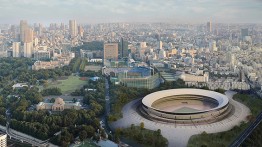In-Class Workshop | Equilibrium-based structural design using 3-D graphic statics
Monday, October 12, 2020, 2 - 5pm

Equilibrium-Based Structural Design Using 3-D Graphic Statics
This workshop is hosted by Structures II with professors Thorsten Helbig and Florian Meier.
The aim of this workshop is to introduce the participants to a novel design method for the generation of equilibrated structures in three-dimensions using graphic statics and specifically the Combinatorial Equilibrium Modelling (CEM). CEM is an innovative approach to structural design in which, contrary to other equilibrium-based form finding approaches, the equilibrium condition is inherent to the model and does not require any numerical simulation to be computed. CEM is grounded on vector-based 3D graphic statics and graph theory and allows the designers to take full advantage of the relationship between topology, form and structural behavior during the early stages of the design process. To make this approach operative, an interactive, computer-aided design tool has been developed within the 3D software environment McNeel Rhinoceros and Grasshopper. The tool enables the designers to work in real-time and in an intuitive way to generate non-conventional 3D spatial networks in equilibrium (form diagram) for any designer-specified connectivity, any combination of compression and tension forces (topological diagram) and any set of force magnitudes (force diagram).
The workshop consists of two halves: a taught part discussing principles, case studies and containing simple exercises and demonstrations; a second tutorial part in which the participants will explore and study a couple of prepared CEM-examples for the design of pedestrian bridges and multi-storey buildings.
Ole Ohlbrock holds a degree in Civil Engineering since September 2013. He studied Civil Engineering with the minor subject Architecture at the Technical University of Munich from 2007 to 2013. Between his undergraduate and master's degree, he worked as an intern at Schlaich Bergermann and Partner, each half a year in Stuttgart and New York. He gained his first practical experience during his schooldays, including stays at Behnisch Architekten in Stuttgart. In his master's thesis Ole discussed the topic of digital performative structural design.
Ole is currently a PhD student and Lecturer at the Chair of Structural Design at the Swiss Federal Institute of Technology (ETH) in Zurich. His research focuses on the creative use of computational tools for the conceptual design of equilibrium networks and on lightweight structures.
Pierluigi D'Acunto graduated in Building Engineering and Architecture with honours from the University of Pisa (Italy) in 2007 and he received a Master of Architecture with distinction from the Architectural Association School of Architecture in London (UK) in 2012. In 2018, he obtained a PhD degree with distinction at the Chair of Structural Design at ETH Zurich for his dissertation "Structural Folding for Architectural Design" under the supervision of Prof. Joseph Schwartz. Since 2006, he has been gaining professional experience as an architect and an engineer in various private practices in Italy and Switzerland. He has been awarded in several national and international architectural competitions, including the Europan 11 competition in Norway in 2011.
Pierluigi is currently Lecturer and Postdoctoral Researcher at the Chair of Structural Design. His research is primarily focused on exploring the convergence of architecture and engineering through geometry and graphic statics. His areas of specialisation are vector-based 3D graphic statics, computational form-finding based on equilibrium modelling, and applied structural design informed by emergent building technologies.
This workshop is open to current Cooper Union students, faculty, and staff. For access link and password, please refer to the newsletter or email mauricio.higuera@cooper.edu.
View the full Fall 2020 Lectures and Events List.




